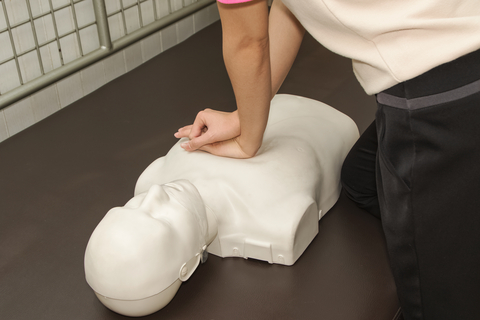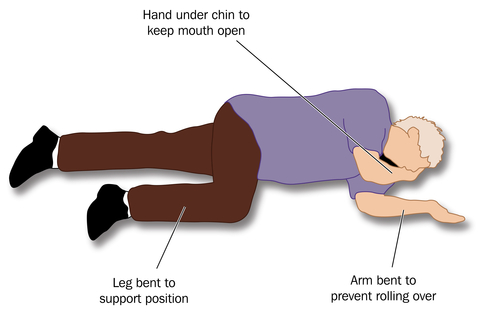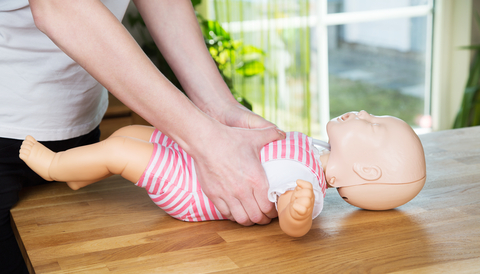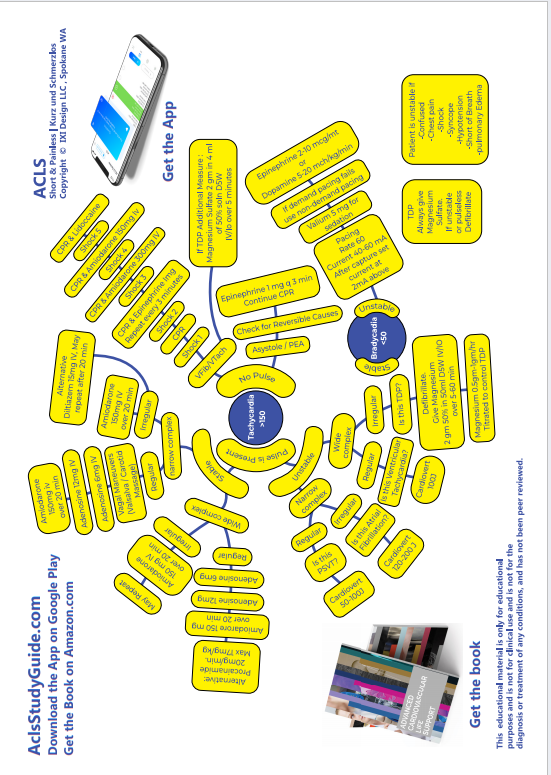
CPR: ADULT
If you find an adult unresponsive, this is what you do.
Check for responsiveness. "Are you Ok? Can you hear me?"
- If there is no response, call 911, or call a code if you are in the hospital. Get a defibrillator if available.
- Open the airway using a headtilt chin lift
- Check pulse, and while doing that, look for breathing. Use only 5-10 seconds for this, and do it simultaneously.
-
If no pulse and no breathing
(agonal gasps same as no breathing),
start
CHEST COMPRESSIONS, 100-120 compressions per minute.
Depth of compression should be 2-2.4
inches. Allow complete chest recoil
after each compression. Do Head tilt
Chin lift (AIRWAY) for delivering
breaths. If only one rescuer, alternate
30 compressions and two
BREATHS. If two rescuers alternate 30
compressions and two breaths. Use a
barrier device and give two breaths.
Each breath should last only one second.
Look for chest rise with each breath.If
possible rotate rescuers every 2
minutes.

- If pulse is present , but patient not breathing: do Head tilt-Chin lift and give one breaths every 5-6 seconds, ie 10-12 per minute. Check pulse every 2 minutes. If pulse is lost go to chest compression and breaths combination as above.
-
Once he starts breathing on his own,
roll him into recovery position. Here is
how you do it: Extend his left arm.
Cross his right leg over his left leg.
Turn his body and head to the left, so
that he is laying on his left side with
his head resting on his left arm, his
body propped up by his right arm and
right leg.

- While giving CPR remember to minimize any pauses to 10 seconds or less.
-
Once you have the AED available do the
following steps:

- Turn it ON
-
Attach the electrode pads to the
patient's chest. one pad is placed just
below the right collar bone. The other
pad is placed over the mid-axillary line
on the left side of the chest. Remember,
you can use adult pads on a child, but
you cannot use child size pads on an
adult.

- Press ANALYSE, Analyze the rhythm
- If the device advises shock (it advises shock only for Vfib)
- Stand clear
- SHOCK
- Resume CPR until prompted by AED to allow rhythm check
- After 2 minutes, the AED will start the cycle all over again.
- If it says "shock not advised", it means the rhythm is not Vfib, so we continue CPR
- Continue CPR until EMS arrives.
ONCE AN ADVANCED AIRWAY IS PLACED, BREATHS ARE GIVEN EVERY 6 SECONDS. NO LONGER DO YOU HAVE TO PAUSE THE CHEST COMPRESSIONS WHILE GIVING BREATHS. CONTINUE CHEST COMPRESSIONS AT 100-120/MINUTE.
REMEMBER, IF THE CAUSE OF UNRESPONSIVENSS IS DROWNING OR DRUG OVERDOSE OR TRAUMA, CPR SHOULD BE GIVEN FOR ONE MINUTES FIRST BEFORE LEAVING THE PATIENT TO CALL FOR HELP. THIS IS AN EXCEPTION TO THE 'PHONE EMS FIRST' RULE.
Read Other Topics
Read All Pages
Ventricular Fibrillation
It this was an unwitnessed arrest, meaning it did not happen in front of you, you should give him 5 cycles of CPR...
Read More
Infant Cpr
Perform 30 chest compressions. Use two fingers and deliver the compressions over the breastbone, just below the nipple line...
Read More



